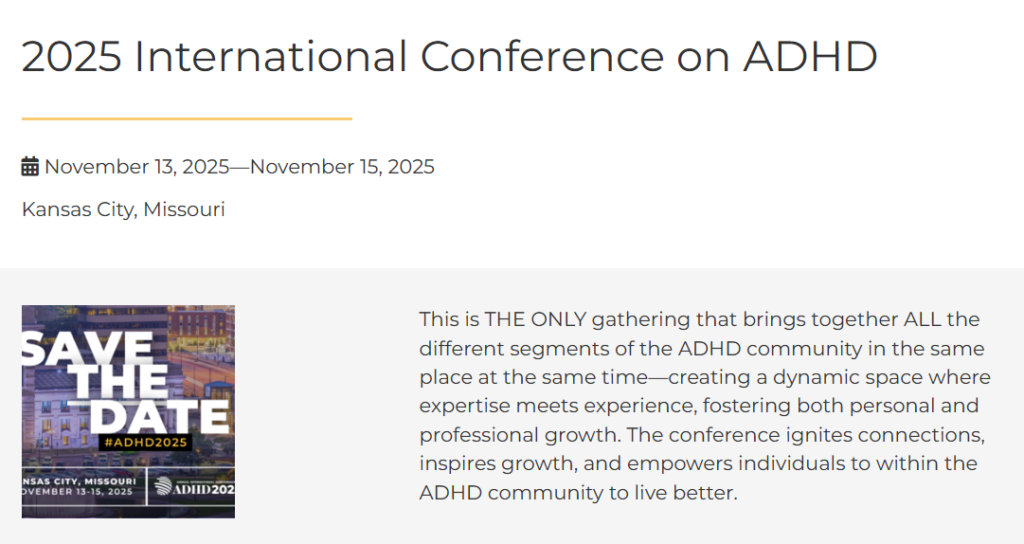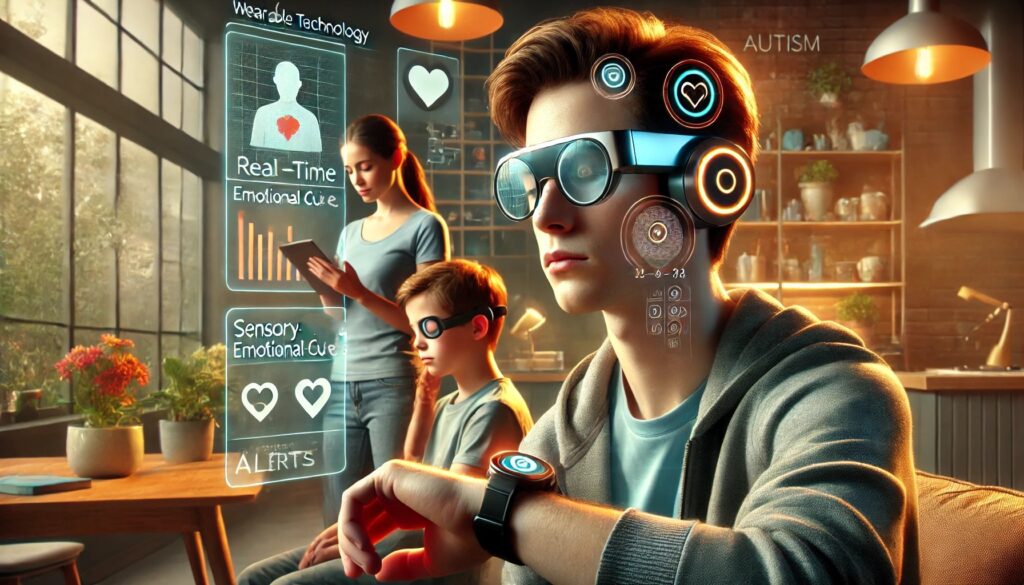
Tropical Nights 2025Scheduled for April 5, 2025, at the InterContinental Miami Hotel, this fundraiser supports the Center for Autism & Related Disabilities (CARD) and celebrates Autism Awareness & Acceptance Month.

Tropical Nights 2025Scheduled for April 5, 2025, at the InterContinental Miami Hotel, this fundraiser supports the Center for Autism & Related Disabilities (CARD) and celebrates Autism Awareness & Acceptance Month.

From November 13-15, 2025, in Kansas City, Missouri, this conference brings together various segments of the ADHD community, fostering personal and professional growth.

Hosted by Autism Speaks, this event offers various activities and opportunities to connect with local families, service providers, and sponsors. For more info, check out: Palm Beach Field Day for All – Autism Speaks

A comprehensive systematic review published in the journal Research in Autism Spectrum Disorders has revealed the promising potential of wearable and mobile technologies in supporting individuals with autism spectrum disorder (ASD). The research, conducted by Koumpouros and Kafazis (2019), analyzed 83 studies to identify current trends, challenges, and future directions in this rapidly evolving field.
Key Findings: A Multi-Purpose Technological Toolkit
The review identified three primary application areas where mobile and wearable technologies are making significant impacts:
1. Training (53% of studies)
Mobile applications and wearable devices are helping autistic individuals develop crucial skills, with over half focused on social skills development (58.3%). Other training areas include vocational skills, cooperation, numeracy, vocabulary, and first aid skills.
2. Monitoring (30.8% of studies)
Technologies are being used to track physiological signals (like heart rate), detect stereotypical behaviors, and monitor location—enabling caregivers and healthcare professionals to better understand patterns and provide timely support.
3. Supporting (15.4% of studies)
Digital tools are assisting with social tasks, education, physical activity, and managing attention deficits and anxiety—providing customizable support for everyday challenges.
Technology Landscape: What’s Being Used?
Android and iOS platforms were equally represented in the studies (39.8% each), with web-based applications following at 12%. Nearly one-third (29.6%) of the studies utilized assistive technologies, while 26% employed computer-assisted instruction and 28.6% focused on computer-mediated communication.
“Affective computing—using technology to recognize emotions—was also prominent (20.8%),” the researchers note, highlighting the importance of emotional intelligence support for the autism community.
Common Challenges in Current Research
The review identified several significant limitations in the current research landscape:
“The results suggested that mobile phones could be a promising means for the delivery of interventions targeting people with ASD,” the authors write, but they emphasize that “several challenges still exist in the research efforts towards the development of applications.”
Looking Forward: The Road Ahead
The researchers emphasize several key areas for future development:
What This Means for the Autism Community
The findings suggest that mobile and wearable technologies offer numerous benefits for autistic individuals, including non-intrusive, discreet support that’s available anytime and anywhere. The portability and adaptability of these technologies make them particularly valuable for providing personalized assistance.
As technology continues to advance, the researchers predict “an important increase in the coming years” for wearable and mobile applications supporting the autism community. With greater focus on addressing current limitations, these technologies could dramatically improve support options, helping autistic individuals develop skills and navigate daily challenges with greater independence.
Reference: Koumpouros, Y., & Kafazis, T. (2019). Wearables and mobile technologies in Autism Spectrum Disorder interventions: A systematic literature review. Research in Autism Spectrum Disorders, 66, 101405. https://doi.org/10.1016/j.rasd.2019.05.005

Friendships are a cornerstone of social development, yet children on the autism spectrum often face unique challenges in understanding and navigating these relationships. Parents play a crucial role in helping their children develop healthy, balanced friendships while avoiding the pitfalls of being taken advantage of due to social naivety. This guide offers practical strategies to support children in building reciprocal, meaningful friendships.
Reciprocity in friendships means that both parties contribute equally to the relationship. A balanced friendship involves mutual respect, shared interests, and emotional support. Children with autism may struggle with social cues, making it harder for them to identify when a friendship is one-sided or manipulative.
Encouraging participation in structured activities where social norms are clear can help children build confidence. Clubs, sports teams, or shared interest groups provide natural opportunities for friendships to develop with guidance from trusted adults.
Friendships should be a source of joy and support, not stress or imbalance. By equipping children with the skills to recognize and foster healthy friendships, parents can empower them to navigate the social world with confidence. Teaching relationship reciprocity not only protects children from being taken advantage of but also helps them cultivate genuine, rewarding connections.

In the article titled “CDC plans to study link between vaccines and autism as measles cases rise,” Jhyrah DeLapp reports that the CDC is planning an extensive study to investigate the connection between autism and vaccines. This decision comes amid a surge in measles cases in the U.S., with experts emphasizing the importance of vaccine safety.
Dr. John Brooks from McLaren Healthcare highlights the life-saving impact of vaccines, stating, “Vaccines have saved more lives and impacted more health than about anything else that medicine has done its entire history”. The article also notes that the connection between vaccinations and autism is primarily attributed to a retracted study by Andrew Wakefield, which was debunked for its falsified findings.
Julia Harbuck-Valley from Schuerer’s Leader of Quality warns about the contagious nature of measles, comparing it to other illnesses like COVID and influenza5. The CDC has identified 222 new measles cases in 2025, with 94% of those cases being either unvaccinated or having unknown vaccination status.
The article concludes by advising readers to consult healthcare providers before making decisions on vaccination status. For more, please visit: CDC plans to study potential link between vaccines and autism.